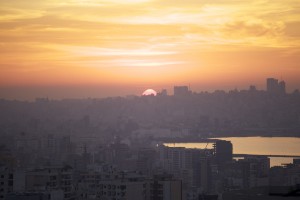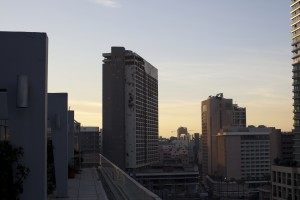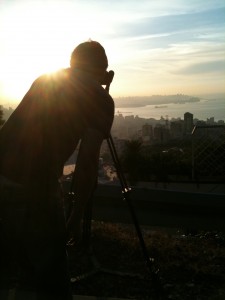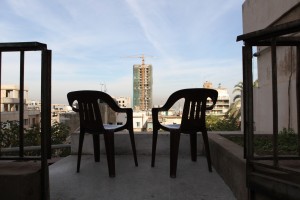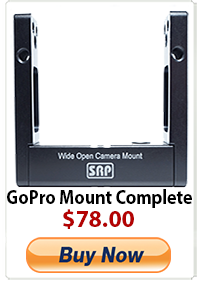WHAT’S IN MY BAG? KIT FOR THE ROAD
I just got back from Beirut, Lebanon where I was director/shooter on a film for Monocle magazine about the rapidly changing face of the city. The gear debate rages long and hard at the moment and seems to get twisted all upside down as people get their panties in a twist for all the wrong reason. If I hear ‘content is king’ one more time I’ll eat my Z-Finder. Just for the record, content never has and never will be king, it’s just neat to say because it’s got those two hard ‘c’ sounds in there. Audience is king, and always will be.
But I digress. The point is this, whatever you feel about gear, if someone is paying you to go to a foreign country to shoot, you’d better make damn sure you have the gear you need, because if you don’t it won’t be pretty. Take an Sony EX1 and you’ll probably only be worried about whether you need a wide angle adaptor, and of course your radio mics. For the DSLR shooter there are very real and very intricate kit choices that affect everything you do. Over the past 12 months I’ve gradually acquired a ton of kit and it bugs the hell out of me because I’m forever foraging around in my bag for this or that cable, lens or filter and not actually shooting. There’s no getting away from it DSLR shooting is a big old faff, particularly if you’re shooting commercially and expect a paycheck at the end of it.
My brief for Beirut involved shooting architecture, interviews, and capturing a sense of the city in all its changing layers. Now that’s a challenge, especially in Beirut. The peculiar architecture of the place means there are gorgeous traditional 2 storey palaces, right next door to 6o storey towers, right up in the sun, the concrete reflecting nicely down at you. The details of the buildings are miles away, the streets are tall and narrow which makes them ideal for portrait photography but pretty irritating for widescreen. So, prepping my kitbag I had to be very precise about what to take and what to leave behind as we were having to sneak into the city a little bit and not draw too much attention to ourselves. Everything was to be on sticks, which I haven’t done in ages as everyone wants me to shoot handheld these days. Keeping me company was the Vinten Vision Blue, a pre-release model I’ve got on loan at the moment, and holy *&^% is it good. For the money it’s a very special piece of kit. I humped my camera bag with the tripod slung over my shoulder up and down hills in 28 degree heat all day and really wasn’t troubled by the weight.
Lens wise I’ve gradually come to a place where I know I have most bases covered. I’m sponsored by Canon so unfortunately Zeiss glass is a no go area for me but I do have one non-regulation lens in the bag that has proved invaluable. Camera is the 5Dmk2. I shot all the interviews on the 50mm L f1.2, just a straight up simple lens that gives you everything you need for an interview. You do have to give yourself a bit of room to get the framing you need but it’s just clean and makes people look great. 24-70 L f2.8 normally the go to lens for this kind of work but 24mm really wasn’t wide enough most of the time and 70mm wasn’t long enough, so I used it a lot less than normal. 70-200 f4 IS – now this was invaluable. I love this lens because it’s so user friendly. Unlike the 24-70L it doesn’t extend, it has great big chunky rings on the zoom and the focus ring and it’s not too heavy. IS is so useful and it handled all the long lens panning I did for details of buildings without any problem at all. It’s beautifully sharp too, and not that expensive for what you’re getting. The joker in the pack is the Tokina 11-16, actually an APS-C lens but at 15mm it’s fine on the 5D and it enabled me to get almost all the insane architectural shots I needed, looking up at the sky and capturing the full height of a building.
The final piece of the puzzle was a Fader ND. I have a 77mm thread version as it fits the 24-70 and the 11-16 but obviously you need step rings for the other two lenses. In the bright sunlight of Beirut this was absolutely essential, keep checking this site for some great deals.
With that selection of lenses there was pretty much no situation I came up against that I didn’t have covered. At a push I would always like to have a really really long lens, like a 400mm as well as the 100mm macro for details but they would have been glamour lenses for the odd special shot and I just wouldn’t have had the space for them. It’s a massive pain in the danglies constantly changing lenses, especially when you’re on a very tight schedule and shooting fast but at least you’ve got the lens you need. I can’t reiterate enough how important it is to be well-equipped on commercial jobs, having enough CF cards, enough batteries, fast card reader, and the ability to manage all your kit single-handedly and efficiently in pressure situations. It’s definitely a challenge. What’s in your kit bag?
-
http://www.projekt-media.com Brant
-
http://pulse.yahoo.com/_25AXRISQBEDQM477JWDNJTJIQI guy

